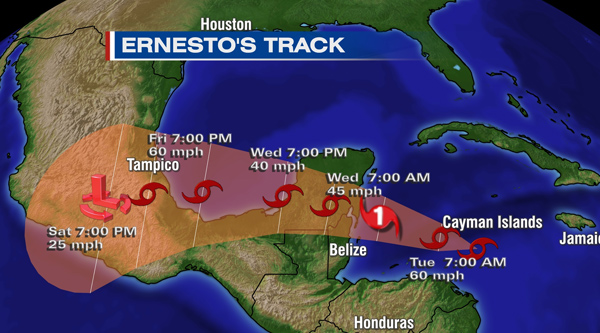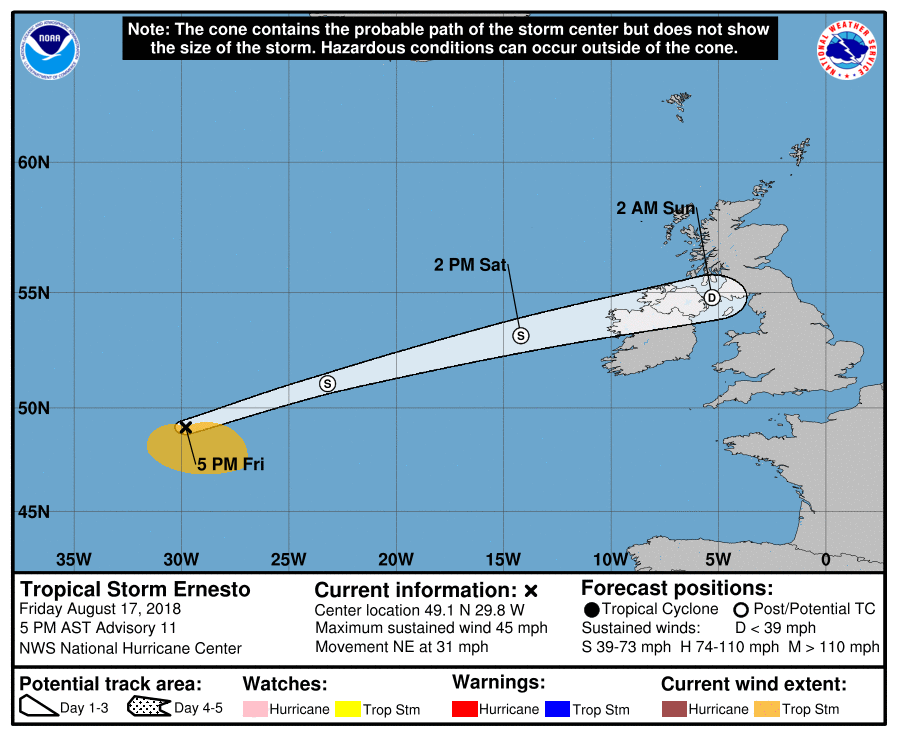

Inland flooding due to heavy rainfall can also be expected, especially for low-lying or otherwise flood-prone areas. Damage to property and infrastructure from seawater inundation, water velocity and waterborne debris are probable, with wave battering also probable for immediate coastal areas. Flood impacts due to seawater inundation could be severe given the size and strength of the storm. Gulf Coast at Landfall: Expected impacts include considerable damage to property and infrastructure from category-3 winds near the core of the storm, with downed trees and powerlines and resulting power outages over a broader area extending well away from the center of circulation.It should be noted that Hurricane Delta is expected to grow in size, if not strength, which will bring hazardous conditions to a wide stretch of coastline outside of the immediate landfall location. There remains some uncertainty in the landfall strength, although currently the NHC is forecasting a category-3. Model track guidance is tightly clustered on a landfall along the central U.S. However, prior to landfall, the storm should track through cooler waters adjacent to the coast and a higher shear environment, which will likely weaken the system. Forecast Track and Intensity: Model intensity guidance and the NHC forecast Delta to re-intensify to category-4 strength within the next 36-48 hours over the very warm waters of the southern Gulf of Mexico.Delta is the first hurricane to make landfall in the state of Quintana Roo since Ernesto in 2012. An evacuation of over 32,000 tourists has been necessary. The unexpected weakening of Delta just prior to landfall likely reduced some of the more extreme impacts, however significant structural damage is expected, especially in coastal areas. Significant storm surge of up to 9 feet accompanied by destructive wave action is forecast from Cabo Catoche to Progresso. Impact of Delta on Quintana Roo, Mexico: As Delta made landfall in Puerto Morelos, Mexico this morning, sustained winds of 110 mph were observed.This statistic places Delta as the most rapidly intensifying hurricane in the Atlantic Basin since Hurricane Wilma in 2005. Delta increased in strength 80 mph, more than doubling from a 60 mph storm at 2 pm EDT Monday to 140 mph at 2 pm EDT Tuesday.


Furthermore, the strengthening of Delta from a tropical storm to a category-4 hurricane in less than 24 hours is the most rapid intensification witnessed in the Atlantic Basin since Hurricane Wilma in 2005. Delta is now the strongest Greek alphabet named storm in history, and is the second strongest storm in the Atlantic Basin this year, behind only Hurricane Laura. A strong than expected shear environment caused Delta to weaken prior to landfall as a category-2 hurricane in Puerto Morelos, Mexico at 5:45 am CDT Wednesday, bringing destructive wind, rain and storm surge to a highly populated stretch of coastline. Hurricane Delta rapidly intensified to a category-4 hurricane during the day on Tuesday, attaining wind speeds of 145 mph on a path toward the Yucatan Peninsula.


 0 kommentar(er)
0 kommentar(er)
